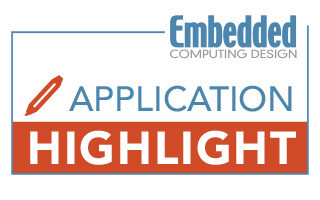Application Highlight: congatec Hypervisor-on-Modules to Virtualize IIoT
April 01, 2024
Sponsored Story

With all the buzz around AI and virtualization, especially with the focus on Digital Twin in the embedded systems space, companies are getting loaded up with processing, memory, and applications tailored to deploying these sophisticated modeling and (eventually) predictive AI tools.
One critical element that must not be ignored, especially in Industrial and IIoT implementations is the hypervisor that will manage all these virtualized, AI-powered, systems and digital twins. What is usually the process is to leverage a hosted hypervisor, which is run as a software layer on top of the conventional OS and hardware. In industrial settings, however, that additional layer of complexity introduces what, to many, could be too great an opportunity for the introduction of bugs or faults that can lead to the dreaded downtime.
To avoid that, it is better to implement a hypervisor directly in the firmware, so integration and compatibility are hard-coded into the modules.
Application Use Case
Autonomous Mobile Robots (AMR) are a perfect example of the power, and necessity, of embedding hypervisors into the SOM firmware. Inspection robots in particular are designed to execute complex tasks with autonomy in demanding and hazardous industrial environments like offshore wind farms, oil rigs, mines, manufacturing facilities, and construction sites.
Because of the wide variety of tasks and environments in which these AMRs must reliably operate, they need to be loaded with large sensor payloads and enough battery hours for autonomous operation. These sensors could be everything from optical zoom cameras to thermal sensors and ultrasonic microphones. All this variety requires a degree of flexibility in software modules, computing performance, and capabilities, especially when we start introducing AI-enabled applications.
An embedded hypervisor is a key tool for enhancing and simplifying the integration and consolidation of software functionalities on one computing system in an AMR. The embedded hypervisor allows multiple virtual machines (VMs) and digital twins to run concurrently on a single processor, with each of them operating independently, securely, and isolated.
With multiple real-time and general-purpose operating systems running concurrently on single processors, the hypervisor partitions available resources and assigns hardware partitions to individual VMs with their own OS. With this setup, the system makes better use of overall hardware capacity and lowers costs and energy consumption as compared to a multisystem installation. It’s also simpler in terms of hardware, so it’s more dependable, and the privileged mode means that embedded real-time hypervisors perform faster data exchange via shared memory and the addition of APIs allows time synchronization between hosts and guests and enhancing diagnostics and usability aspects, all without increasing latency.

congatec Hypervisor-on-Module
congatec recently announced that it is now implementing its Hypervisor in firmware and will be making it standard on all the company’s x86 COMs, which will automatically lower the barrier to start working on system consolidation.
The goal of this integration move is to simplify real-time virtualization for system consolidation, congatec said. That will reportedly make it easy to save costs, reduce system count, and reduce the size, weight, and power consumption (SWaP) of the entire system.
Of course, the key function of simultaneously running multiple operating systems, including real-time OS, at maximum efficiency is the main functionality. The company has now made its modules more application-ready than other solutions, helping OEMs and users to reduce NRE, and time to market.
Basically, congatec believes that now there are almost no barriers to industrial users adopting virtualization and leveraging the benefits of system consolidation with its Hypervisor-on-Module.
Costs are going to come down by reducing hardware, and cabling, and by minimizing SWaP. Efficiency is enhanced through the full use of all the system resources in multicore designs. Most important, though, is that this more optimized allocation of OSs and applications across multiple cores gives users more functionality visibility in a single consolidated system. Even real-time and non-real-time critical applications can be consolidated in parallel on a single x86 Computer-on-Module, congatec says.
With Hypervisor from congatec, every OS is assigned to run on its own core or set of cores and I/O (such as PCIe, Ethernet, and USB), so that each can run independently from the other. Booting or suspending any OS will not affect the others, and customers will get a software and hardware package already qualified to support real-time applications, as the real-time behavior of the modules has already been verified by congatec.
When functions are separated among virtual machines, the collaboration between these virtual machines remains highly flexible. Different operating systems may run in different execution modes at the same time and any mix of SMP and single-CPU, 32-bit and 64-bit is possible.
The digital world is fast becoming the operational world, and the industrial environment of the future will be virtual-first, in design, testing, operation, maintenance, and predictability. The Hypervisor-on-Module is designed to ease the transition to that phase, and the time for the changeover is not far off.
Additional Resources:
- Product Page: https://www.congatec.com/en/technologies/real-time-hypervisor/
- Demo at Embedded World 2024: https://www.congatec.com/de/congatec/events/congatec-at-embedded-world-2024/




